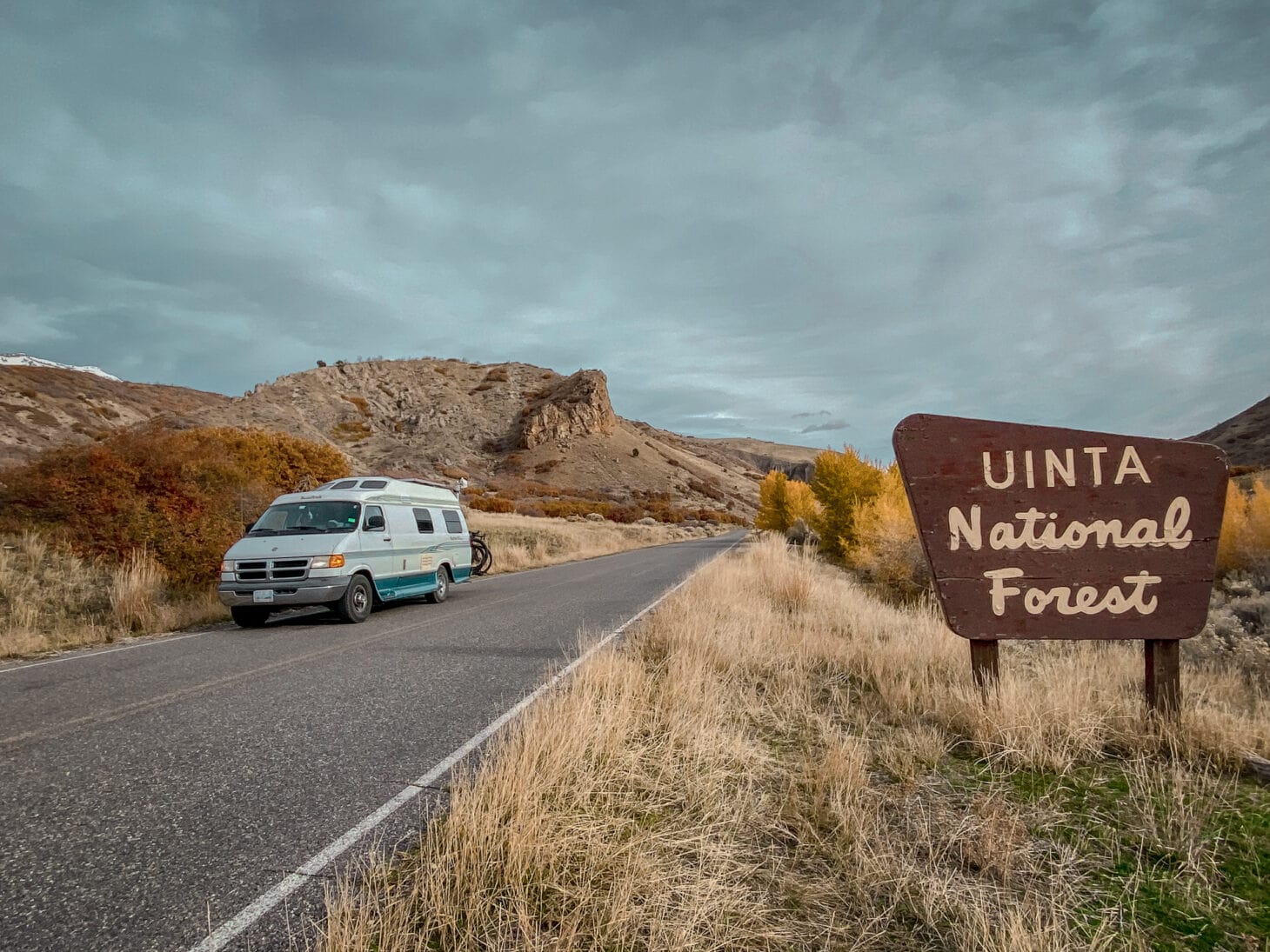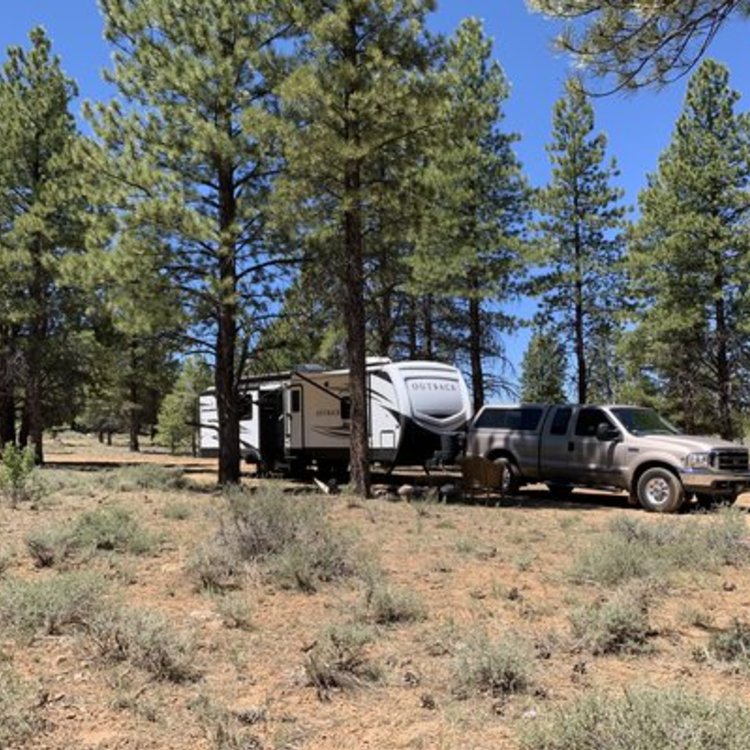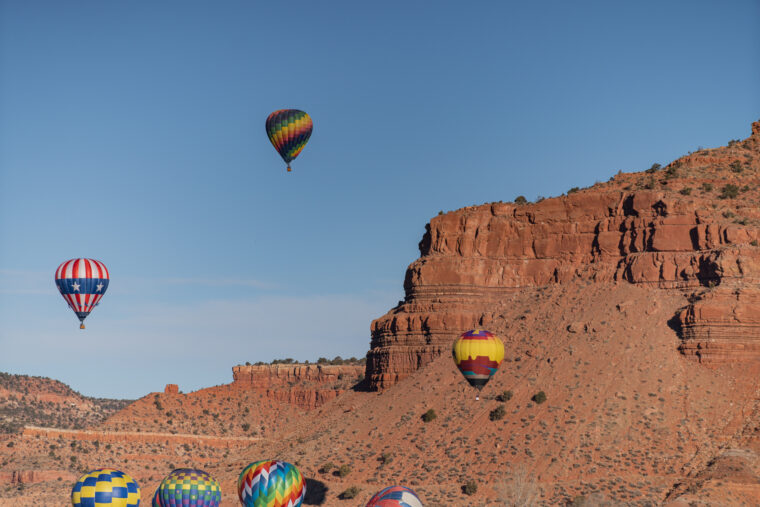I often joke that the entire state of Utah could be a national park. Many spots that would be huge tourist destinations elsewhere are virtually overlooked because of the Beehive State’s wealth of awe-inspiring locations.
With Utah’s “Mighty 5″ national parks continuing to see record crowds, here are a few alternative options, so you can reconnect with the natural world without rubbing shoulders with dozens, if not hundreds, of other people on the trail.
The Best Campgrounds Near Southern Utah State Parks
1. Kodachrome Basin State Park
I had high hopes for Kodachrome Basin, and despite its relatively small size, I wasn’t disappointed. Named by National Geographic photographers in 1948, the park is worthy of its namesake film.
Park Highlights
Nearly 6 miles long, Panorama Trail (long loop) winds its way through much of the park’s most famous spires and rock formations. After a short but steep rise to a hilltop you get a 360-degree view of the surrounding beauty. You can either hike the trail or ride a mountain bike.
The 1.5-mile Angel’s Palace hike takes visitors up to the ridgeline with more incredible views. The trail is reasonably marked and has some steep drop-offs.
How to Get There by RV
Utah State Road 12, or Scenic Byway 12, is the main road that passes by Kodachrome Basin State Park. There are a couple of towns along the way where you can get fuel and supplies.
Where to Stay
Inside the park, there are a total of 63 campsites along three loops, including the Arch Campground. Most of the sites can accommodate larger rigs and offer full or partial hookups and fire rings. There’s also a laundry facility on site.
Rock Springs Bench is a free dispersed camping area within nearby Grand Staircase-Escalante National Monument. While there are no toilets or other facilities, it’s an ideal spot for self-contained RVers on a budget.
Other Camping Options
2. Dixie National Forest
Located less than 30 minutes from Bryce Canyon National Park, Dixie National Forest is an alternative for travelers overwhelmed by the larger park’s onslaught of crowds. You won’t be losing out on scenery either; in fact, the seemingly never-ending columns of hoodoos inside the national forest can easily be mistaken for Bryce.
The main Red Canyon trailhead is located about 1.5 miles from the visitor center and is poorly marked from the road. The road to the parking area looks more like a driveway than a trailhead.
Park Highlights
The Cassidy Trail is named for the infamous outlaw Butch Cassidy, who according to legend once hid in these canyons. While horse riding is popular on this trail, I opted for a mountain bike.
There are several tricky sections of single track, including a couple of extremely steep sections, but the payoff is a spectacular overlook that rivals nearby Bryce Canyon.
At the visitor center, I did the brief mile-plus Hoodoos and Pink Ledges hike. A brochure offers info on 13 different stops along the hike, with details about the area’s trees, plants, and geology. This trail would be a great hike and learning experience for kids.
6 Tips for Getting Your Kids Interested in Hiking
How to Get There by RV
Highway 12 is your best route, and this section of the road may be one of the prettiest stretches of highway in the state—and that’s saying something.
Where to Stay
Almost directly across the road from the visitor center, you’ll find the Red Canyon Campground. This campground has a reputation for being one of the better U.S. Forest Service sites in the state.
The staff at the Dixie National Forest Visitor Center also suggested camping at Tom’s Best Spring about 5 miles away. The main dispersed camping area is an open field with no amenities. Cliffside spots are available if you’re willing to drive a little further. Note that some areas are currently closed, so make sure to read posted signs.
Other Camping Options
3. Red Cliffs National Conservation Area
Located a short drive from St. George, Utah, the 60,000-acre Red Cliffs National Conservation Area offers 130 miles of non-motorized trails across three ecosystems: the Mojave Desert, Great Basin, and Colorado Plateau.
Park Highlights
On the 2-mile Red Reef Trail, a path gives way to small waterfalls, remnants of the flowing waterways that carved the canyons millions of years ago. Using a nylon rope and Moqui steps—created by ancient Native Americans who notched holes into the side of the rock to use as a ladder—we were able to swing around the fast-moving creek and into a clearing. The pools of water serve as an incentive for both hikers and pups.
If you’re arch-hunting, be sure to seek out Elephant and Babylon Arches, both of which require fairly short, moderate to easy hikes.
Mountain bikers will love the 10-mile Dino Cliffs and Church Rock Loop that takes riders up some easy slickrock to spectacular vistas. Don’t go too fast though, or you’ll miss the fossilized dinosaur tracks.
Snow Canyon State Park falls within the Red Cliffs Preservation Area, which includes the Red Cliffs National Conservation Area. Burnt sandstone perfectly contrasts with the scattered black lava rock and white, snow-capped mountains in the distance. Be sure to hike into Jenny Canyon—although it’s less than the length of a football field, it’s a nice way for families to experience a real slot canyon.
How to Get There by RV
Interstate 15 traverses the southern edge of Red Cliffs National Conservation Area and Highway 18 bisects it north to south.
Where to Stay
Red Cliffs Campground offers a handful of RV-friendly sites, and you can’t beat the location. Multiple hiking trails leave from the campground, and visitors have the standard fire pit and picnic table amenities. If you have a tall rig, look elsewhere; reaching the campground requires passing below two underpasses with a maximum height of about 11.5 feet. Reservations are required and can be made at Recreation.gov.
Leeds Canyon is a great (and free) dispersed camping option located along a well-maintained road within Red Cliffs National Conservation Area. Several spots have canyon backdrops.
Other Camping Options
4. Uinta-Wasatch-Cache National Forest
Located a short drive from Salt Lake City, Uinta-Wasatch-Cache National Forest offers visitors a myriad of outdoor activities, including hiking, skiing, fishing, and mountain biking, within its more than 2.1 million acres.
Hunting is permitted during the appropriate seasons. Contact the forest beforehand if you want to visit during the off-season.
Park Highlights
If you’re looking for a challenge, the 7.4-mile (roundtrip) Lake Blanche Trail takes you up more than 2,500 feet over difficult terrain to reach the namesake alpine lake.
Tackling the 3.4-mile (roundtrip) hike to Donut Falls takes you to one of the most unique waterfalls in the state. While the bulk of the trail can be considered fairly easy, the final push includes a somewhat steep climb up a slippery boulder field. The Donut Falls gets its name from the hole in the cliffside cave where water gushes through.
If you feel more like a casual stroll, the 0.2-mile Devils Kitchen Trail near the Nebo Scenic Loop takes you to red rock formations resembling a miniature Bryce Canyon.
How to Get There by RV
Many of the campgrounds and recreation areas are located less than 20 minutes off of Interstate 15. The 37-mile Mount Nebo National Scenic Byway intersects a section of the forest between Nephi and Payson, with gorgeous overlooks of the Wasatch Mountains and Mount Nebo.
Where to Stay
National forest campgrounds have limited windows of availability, so be sure to check the website if you’re planning to visit in early spring or late fall. We stayed at Cottonwood Campground, where the sites are well-spaced and many are pull-throughs. Some even have a stream running nearby.
Jolley’s Ranch offers electric and water hookups, as well as the typical amenities, in this pleasant campground within Hobble Creek Canyon. Although the restrooms have running water, there are no shower facilities.
Other Camping Options
5. Grand Staircase-Escalante National Monument
Grand Staircase-Escalante begins near the highest point of the Grand Canyon and rises in a series of multi-colored cliffs and rock benches. Grand Staircase’s trails and scenery rival—and, some might argue, surpass—many national parks.
Park Highlights
We made a pre-dawn trek to the Toadstools to catch the sunrise, hiking a short mile or two through a sandy wash. Bathed in the soft pink light, the hoodoos were absolutely stunning. This is an easy hike and great for families.
There are two Peekaboo Canyons located in and around Grand Staircase-Escalante, one is 26 miles south of the town of Escalante and a second is just north of Kanab, Utah (also called Red Canyon). I attempted to make it to both, but the drive down the gravel Hole-in-the-Rock Road was rough terrain, so I turned back after just a few miles.
Getting to Peekaboo (Red) Canyon requires a 9-mile sandy out-and-back hike or a four-wheel drive vehicle. The short half-mile canyon hike reminds me of the more famous Antelope Canyon to the south, without the crowds.
The near 5-mile Mansard Trail leads visitors up a wash, some easy rock scrambles, and switchbacks before reaching a set of well-preserved petroglyphs.
In Paria, Utah, little remains of either the real-life ghost town or the movie set where they filmed The Outlaw Josey Wales and other Hollywood Westerns. There’s still plenty of natural scenery to enjoy. A mountain bike helps to navigate the maze of dirt roads, but be aware that there’s no real map at the trailhead or cell phone signal. Be sure to download hikes on All Trails or Trailforks ahead of time.
How to Get There by RV
Grand Staircase-Escalante is massive, so there’s no shortage of roads running through the national monument. Highway 12 traverses much of the western edge of the park, while U.S. Route 89 takes you to the southwestern tip of the state before crossing into Arizona.
Where to Stay
The Bureau of Land Management dispersed camping area just off Hole-in-the-Rock Road offers plenty of open space and stone fire pits. Despite two dozen other RVs and campervans, it was peaceful.
Hog Canyon is a convenient home base for visiting the sites and trails surrounding Kanab. It’s primarily used as a staging area for ATVs, and trail users are typically gone by dusk. There’s also a BLM camping area across the road, but it can be difficult to maneuver with an RV.





























